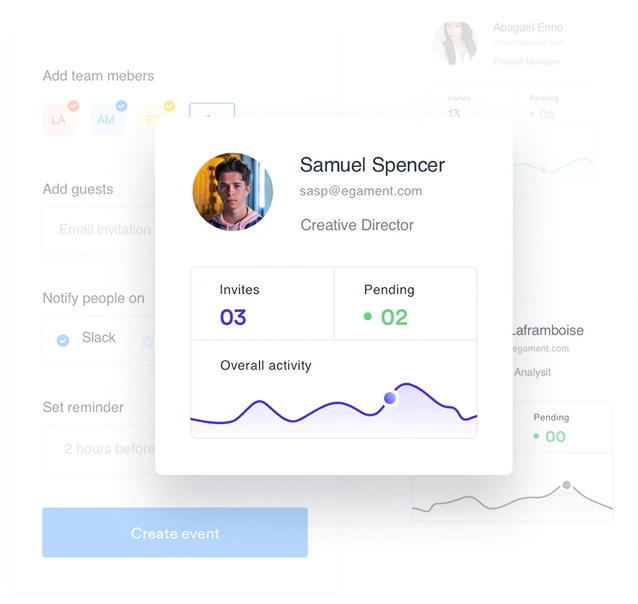According to a recent study by the National Association of College and University Business Officers (NACUBO), administrative costs now account for nearly 40% of total university expenditures—a figure that has doubled over the past three decades. While institutions pour resources into enhancing student experiences and academic excellence, the reality is sobering: outdated operational systems are quietly draining budgets that could otherwise fund scholarships, research initiatives, and faculty development.
At any higher ed institution, if the admissions team manually processes thousands of applications while the finance department struggles to reconcile payments across multiple spreadsheets.
Meanwhile, the academic office is buried under paper transcripts, and the student services team fields countless calls about missing records. Each department operates in isolation, creating redundancies that multiply costs exponentially.
This fragmented approach isn’t just inefficient—it’s financially devastating. However, forward-thinking institutions are discovering a powerful solution that’s transforming their operational landscape entirely. And that powerful solution is adopting a robust student information system for higher education.
Institutions today face an unprecedented financial squeeze. Beyond the obvious expenses like faculty salaries and facility maintenance lies a web of hidden operational costs that most institutions severely underestimate.
Consider the typical institution’s administrative workflow: A single student enrollment requires coordination between admissions, finance, academic records, housing, and student services. Without integrated systems, this process involves duplicate data entry, manual verification, and countless hours of interdepartmental communication. Research from EDUCAUSE reveals that institutions spend an average of $1,200 per student annually on administrative overhead—costs that could be dramatically reduced through strategic automation.
Moreover, the compliance burden continues to intensify. Institutions must navigate complex reporting requirements for accreditation bodies, government agencies, and funding organizations. When systems don’t communicate effectively, preparing these reports becomes a resource-intensive nightmare that diverts attention from core educational missions.
The financial impact extends beyond direct labor costs. Manual processes introduce errors that trigger costly corrections, delayed payments, and compliance penalties. Furthermore, the inability to access real-time data hampers strategic decision-making, preventing institutions from optimizing resource allocation and identifying cost-saving opportunities.
Educational Enterprise Resource Planning (ERP) systems represent a paradigm shift in how universities manage their operations. Rather than maintaining separate software solutions for different departments, ERP creates a unified digital ecosystem where all institutional data flows seamlessly.
The transformation begins with process automation. Tasks that previously required hours of manual work—from student registration to financial reporting—become streamlined, automated workflows. For instance, when a student submits an application, the ERP system automatically updates admissions databases, triggers financial aid calculations, and prepares housing assignments simultaneously.
This integration eliminates the redundancies that plague traditional university operations. Instead of multiple departments maintaining separate student records, everyone accesses the same real-time database. The result? Dramatic reductions in data entry errors, faster processing times, and significantly lower administrative overhead.
Furthermore, modern ERP systems provide powerful analytics capabilities that enable data-driven decision-making. Institution leaders can instantly access dashboards showing enrollment trends, financial performance, and resource utilization patterns. This visibility allows for proactive budget management and strategic planning that maximizes operational efficiency.
The promise of 20% operational cost savings isn’t marketing hyperbole—it’s achievable through specific, measurable improvements across key areas.
Administrative Staff Efficiency represents the largest savings opportunity. ERP automation typically reduces administrative workload by 30-50%, allowing institutions to reassign staff to higher-value activities or reduce temporary hiring during peak periods. For an institution spending $5 million annually on administrative salaries, this translates to potential savings of $1.5-2.5 million.
Paperless Operations generate substantial cost reductions beyond obvious printing expenses. Digital document management eliminates storage costs, reduces retrieval time, and streamlines approval workflows. Universities typically save 15-25% on office supply budgets while dramatically improving process speed.
Improved Financial Management through integrated accounting modules prevents budget overruns and optimizes cash flow management. Real-time visibility into departmental spending helps identify cost-saving opportunities before they become budget shortfalls. Many institutions report 10-15% improvements in budget adherence after ERP implementation.
Enhanced Compliance and Reporting capabilities reduce the time and resources required for regulatory compliance. Automated report generation eliminates the need for dedicated staff during reporting periods, while built-in compliance checks prevent costly violations.
Energy and Resource Optimization through integrated facilities management modules helps universities reduce utility costs by 8-12%. Smart scheduling systems ensure efficient use of classrooms, laboratories, and common areas while automated maintenance tracking prevents costly emergency repairs.
While cost reduction provides immediate financial relief, ERP systems deliver strategic advantages that compound savings over time. Enhanced student experiences through faster service delivery and improved communication strengthen enrollment and retention rates. Better data analytics support more effective fundraising efforts and grant applications.
Additionally, integrated systems position institutions to adapt quickly to changing educational landscapes. Whether implementing hybrid learning models or expanding online programs, ERP/SIS provides the operational flexibility needed to respond to market demands without major system overhauls.
The scalability factor cannot be overlooked either. As institutions grow or face budget constraints, ERP/SIS systems adapt seamlessly. Unlike traditional software that requires expensive upgrades or replacements, modern ERP platforms evolve with institutional needs.
Successful ERP implementation requires careful planning and realistic expectations. Most institutions achieve full return on investment within 2-3 years, with the most significant savings materializing after the first year of operation.
The key to maximizing cost savings lies in comprehensive change management. Staff training, process redesign, and stakeholder buy-in are crucial for realizing the full potential of ERP systems. Institutions that invest adequately in these areas consistently achieve better financial outcomes.
However, the selection process deserves careful attention. Not all ERP systems are created equal, and choosing a solution designed specifically for higher education ensures better alignment with institutional needs and faster implementation timelines.
The path to 20% operational cost savings through ERP software isn’t just a possibility—it’s a strategic imperative for universities serious about financial sustainability. By eliminating redundancies, automating manual processes, and providing real-time visibility into operations, educational ERP systems transform how institutions manage resources and deliver services.
The institutions that act now will gain competitive advantages that extend far beyond cost savings. They’ll create more efficient operations, improve student experiences, and build the technological foundation needed for future growth. Moreover, the resources freed through operational efficiency can be reinvested in academic programs, student services, and faculty development—the core missions that define educational excellence.
The question isn’t whether your institution can afford to implement an ERP system—it’s whether you can afford not to. In an increasingly competitive educational landscape, operational efficiency isn’t just about cutting costs; it’s about creating sustainable financial models that support long-term institutional success.
Ready to discover how much your university could save? Book a personalized free demo with our education specialists and see your cost-saving potential in action. Your financial transformation starts with a single conversation.

Experience Academia – Your partner in transforming campus operations, a trusted all-in-one ERP/SIS solution.
Get the latest insights, trends, and updates delivered straight to your inbox!
